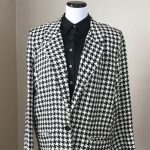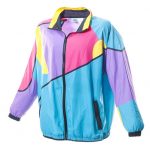The 1980s saw the rise of the puff sleeve dress and puff sleeve blouse when it came to women’s fashion. The fashion is exactly like it sounds, a dress or a blouse where the sleeves were inflated to form a “puffy look”.
There was nothing quite like growing up in the 1980s. It was a time when fashion was the most popular way of making a bold statement about who you were, and expressing yourself artistically.
As a result, many popular fashion trends from throughout history saw a rebirth during the 80s, and one of those were “Puffy Sleeves”.
The History Of Puff Sleeve Dresses
Even though we think of puff sleeves being a 1980s trend, the actual fashion goes back hundreds of years. In fact, puff sleeve fashion has quite an illustrious history that dates back much much further than you probably expect!
Juliet Sleeves
We know that puff sleeves were a very popular fashion trend in the 1980s. But the story of this unique style dates back to the 1500s when William Shakespeare was busy creating his masterpieces!
Known at the time as the “Juliet Sleeve”, these shirts featured a slim arm but had a very puffy area around the shoulders.
The first people to wear the puff sleeve design were those who served the monarchy during the Tudor Period. Even Henry VI was known to sport puffy sleeves that had slashes in them to show that he was wealthy enough to wear expensive undergarments.
Victorian Era Mutton Sleeve Dresses
After the fall of the Tudors, the Juliet sleeve fell out of fashion until it was revived again during the Victorian era. In the 19th Century, it was commonplace for women in Canada, the United States, as well as England to wear mutton sleeves.
Because of their similarity to the leg of a lamb, the puff-sleeved shirts were referred to as gigot or mutton sleeves. In the popular book, Anne of Green Gables, the main character had asked for a shirt with puffed sleeves, which indicated just how popular they were with teenagers at the time.
Carolina Herrera’s Puff Sleeve Dresses
Puff sleeves made a comeback in 1981 when Prince Charles married Lady Diana. During the wedding, Diana wore a dress that was pretty traditional at the time, except for the overinflated sleeves. It was the first time since the Victorian era that the design was featured in media around the world.
Upon seeing the images of Princess Diana, fashion designer Carolina Herrera chose to reinvent the puffed sleeve design altogether.
Throughout the 80s, Herrera continued to design custom outfits for people like Nancy Reagan and Jackie Kennedy Onassis. Each one of her one-off designs featured puff sleeves.
Following Herrera’s lead, other designers like Oleg Cassini, Laura Ashley, Jesse McClintock, and others began creating various lines featuring the puffy sleeved design.
Puff Sleeve Dresses in the 1980s
By the mid-1980s, the style that had once been popular during the Tudor and Victorian periods made a resurgence. After the world saw Princess Diana’s wedding dress, the popularity of the puff sleeve design skyrocketed. It transcended from a fashion trend that only royalty was allowed to wear, to something more casual that anyone could wear.
Throughout the 80s, actresses in movies and on TV began sporting garments with puffed-out sleeves. One of the most popular actresses of the time, Joan Collins, was often seen wearing this design in her role in the soap opera Dynasty.
Even in a throwback episode of the series Friends, both Monica Geller as well as Rachel Green were seen wearing prom dresses in the late 80s with puffy sleeves.
Are Puff Sleeve Dresses Still Popular?
Although puff sleeve dresses were wildly popular in the 1980s, sadly this is a fashion trend that seems to have been left in the 1980s. These days when it comes to dresses, the trend now is to go in the total opposite direction with a sleeveless choice.
Still you can find some casual fashions that feature puffy sleeves, however the trend again is nowhere near as popular as it once was. However as with all things retro, maybe the puff sleeve dress will come back one day, but for now we can only hope this to be the case.












